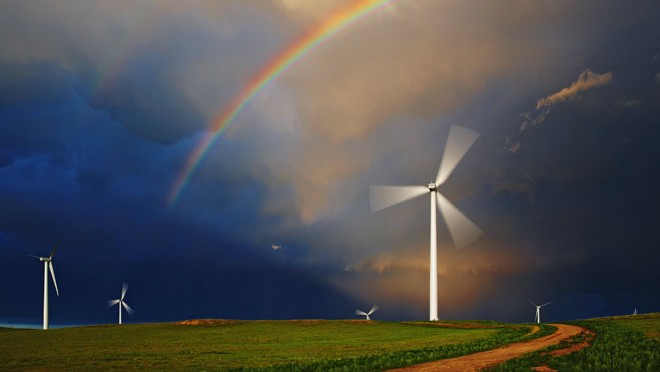Recently, Yahoo.com carried an article by Susan Graybeal, who unfortunately relied on the Institute for Energy Research (IER), an anti-wind group funded by fossil fuel interests, for a discussion of the wind energy industry’s prospects.
With the January 1 extension of the production tax credit (PTC), the wind energy industry is getting back to work. And back to business.
BACK TO BUSINESS
The looming uncertainty imposed on the wind industry during 2012 through inaction of Congress did have a real impact. However, with the PTC extension finished, wind power projects are now getting back on track.
With its extension, the PTC can continue its long track record of leveraging over $15 billion in private investment in new U.S. wind farms each year, while driving a brand new American manufacturing sector, and creating consumer savings by encouraging affordable, domestic, energy with a known price protecting consumers from fuel price volatility.
News highlighting wind industry being reignited:
Wichita Eagle (KS) – http://www.kansas.com/2013/01/
Hays Post (KS) – http://www.hayspost.com/2013/
Boulder County Business Report (CO) – http://www.bcbr.com/article/
Prairie Business (ND) – http://www.prairiebizmag.com/
BACK TO WORK
Wind power investors are reenergized in their interest to invest in wind. For example, First Wind CEO Paul Gaynor told Electric Light and Power, “We are planning to substantially expand our portfolio – by as much as 50 percent or more – with several projects starting construction by the end of 2013. That will mean jobs and investment, and consumers will be getting clean energy at a competitive price.”
And the Prairie Breeze Wind Energy Center near Elgin in northern Nebraska can continue its project, which represents a $350 million capital investment and could create 300 construction jobs (WOWT Channel 6, Omaha, NE).
News highlighting workers back on the job:
Biz Journals – http://www.bizjournals.com/
KBZK (MT) – http://www.kbzk.com/news/mt-
Portland Press Herald (ME) – http://www.pressherald.com/
PTC & RPS BASICS
The production tax credit helps encourage wind power development. By providing an income tax credit of 2.2 cents per kilowatt-hour for the first 10 years of electricity production from utility-scale wind turbines, it effectively encourages increased domestic energy production from wind, which spurs domestic manufacturing and is ultimately passed through to consumers as savings.
Both state renewable portfolio standards (RPS) and the production tax credit (PTC) contribute to increased investments in wind power, increased wind power generation, and savings for consumers.
AMERICANS SAVE WITH PTC-EQUIPPED WIND POWER
With the PTC, wind power has gained the support of public utilities, mainly because generating increasing amounts of wind power lowers costs to consumers while insulating them from fuel price spikes.
Alabama Power, a subsidiary of the Southern Company, made its first wind power purchase last year. In signing off on the contract, the state Public Service Commission noted at the time that the “price of energy from the wind facility is expected to be lower than the cost the company would incur to produce that energy from its own resource…with the resulting energy savings flowing directly to the Company’s customers.”
John Kelley, Alabama Power’s Director of Forecasting and Resource Planning, said of another more recent deal to purchase wind from Kansas, “These agreements are good for our customers for one very basic reason, and that is, they save our customers money.” More generally, Kelley added, “Alabama Power is doubling down on wind. We’re always looking for environmentally friendly ways to produce and obtain rights to reliable, cost-effective electricity. These two agreements represent a win-win for the company and the people we serve.”
By David Ward, http://www.awea.org/blog


